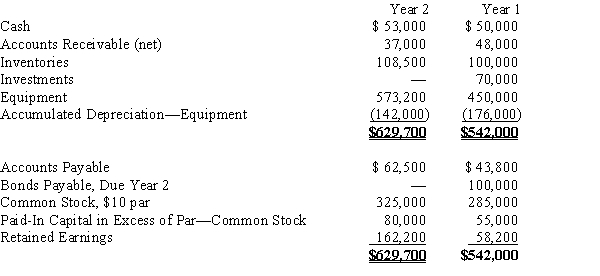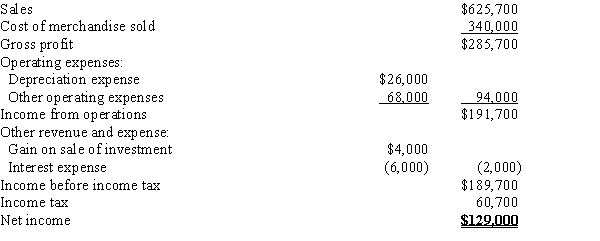The comparative balance sheets of Posner Company, for Years 1 and 2 ended December 31, appear below in condensed form.  The income statement for the current year is as follows:
The income statement for the current year is as follows:  Additional data for the current year are as follows:
Additional data for the current year are as follows:
(a)Fully depreciated equipment costing $60,000 was scrapped, no salvage, and new equipment was purchased for $183,200.
(b)Bonds payable for $100,000 were retired by payment at their face amount.
(c)5,000 shares of common stock were issued at $13 for cash.
(d)Cash dividends declared and paid, $25,000.Prepare a statement of cash flows using the indirect method of reporting cash flows from operating activities.
Definitions:
Liability
[Rephrased] is the state of being legally accountable for actions or decisions, often involving financial compensation to aggrieved parties.
Intended Beneficiary
An intended beneficiary is a person or entity that, although not a direct party to a contract, stands to benefit from the contract's performance as intended by the involved parties.
Creditor Beneficiary
A third party that benefits from a contract, specifically where one party promises to pay a debt owed by another party to this third party.
Donee Beneficiary
A third party that benefits from a contract wherein the promisor agrees to give a gift or confer a benefit directly to the third party.
Q7: The day on which the board of
Q11: Which of the following increases cash?<br>A) depreciation
Q43: The financial loss that each stockholder in
Q78: Which of the following statements is not
Q103: The declaration and issuance of a stock
Q119: Baker's wages<br>A)Prime costs<br>B)Conversion costs<br>C)Both prime and conversion
Q127: Define solvency and profitability. How are they
Q172: If two companies have the same current
Q175: The legal contract between issuer and bondholder<br>A)EPS<br>B)Face
Q186: If common stock is issued for an